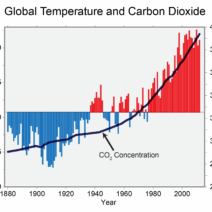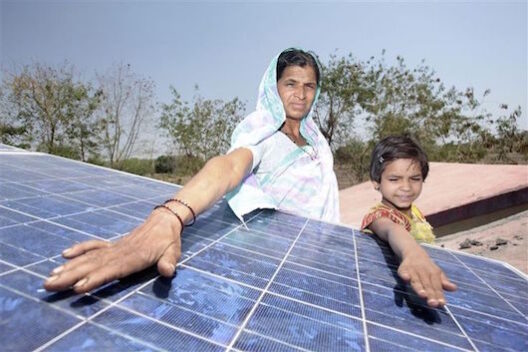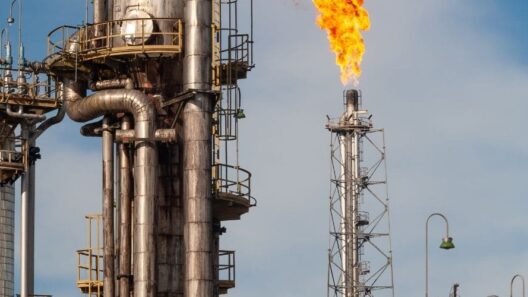Australia, often affectionately dubbed the “Land Down Under,” has garnered a reputation not only for its stunning landscapes and unique fauna but also for its complex relationship with agriculture and climate change. The deliberate act of stubble burning, a traditional agricultural method, has emerged as a significant concern amidst escalating global warming. The impacts of this practice on environmental sustainability and food security have become paramount, calling for a nuanced understanding of Australia’s burning fields.
The agricultural sector, which comprises a substantial portion of Australia’s economy, is unequivocally intertwined with the country’s climatic conditions. As climate change proliferates, the ramifications are diverse and multifaceted. Farmers across Australia have been observing a marked increase in the frequency and severity of heat waves, droughts, and bushfires, phenomena that directly jeopardize soil health and crop yields. The juxtaposition of agricultural activities and environmental stressors creates a complex tapestry that reflects the state of Australia’s agricultural future.
One of the principal agricultural practices contributing significantly to atmospheric greenhouse gases is stubble burning, the procedure of incinerating leftover straw and other plant material after harvest. While this method is applied to clear fields and enrich the soil for subsequent planting seasons, the release of carbon dioxide and other pollutants into the atmosphere is a looming concern. Stubble burning emits particulate matter that exacerbates air quality issues and contributes to respiratory complications in both humans and animals.
The immediacy of food security hangs in the balance. As climate patterns become increasingly erratic, the capability of Australian farmers to produce staple crops such as wheat, barley, and canola is under siege. The repercussions are not merely local; they extend globally given Australia’s status as a significant exporter of agricultural products. A reduction in agricultural output could lead to surges in food prices and heightened food insecurity, not just within the nation but also in regions reliant on Australian exports.
Amid the turmoil, farmers grapple with the stark dichotomy of tradition versus sustainability. The habitual practice of stubble burning has been entrenched in Australian agricultural practices for decades, often considered a necessary evil to maintain productivity. However, this juxtaposition mandates an urgent need for innovative agricultural techniques that can mitigate the adverse effects of stubble burning while promoting soil health and enhancing crop resilience.
One such alternative is the adoption of conservation tillage, a method that minimizes the disturbance of soil. By retaining crop residues on the surface, this practice enhances soil structure and fertility, reduces erosion, and sequesters carbon. Several Australian farmers are beginning to recognize the long-term benefits of maintenance over immediate yields, initiating a slow transition to more sustainable farming practices. However, this transition necessitates considerable investment and a shift in mindset that not all farmers may be ready to embrace.
Moreover, the interplay between government policies and agricultural practices plays a pivotal role in shaping the future of farming in Australia. Policymakers are increasingly aware of the environmental consequences of agricultural practices and are beginning to advocate for legislation that promotes more ecologically responsible farming. Incentives for farmers who engage in sustainable practices, the implementation of carbon credits, and funding for research into alternative agricultural methods form part of a comprehensive governmental response to climate change. This acknowledgement of agricultural responsibility points to a glimmer of hope in ensuring a balanced ecosystem.
Climate science has unequivocally demonstrated that global warming exacerbates climatic instability. As average temperatures rise, the occurrence of extreme weather events becomes increasingly probable. Floods and droughts can decimate crops in a matter of days, crushing hopes for a bountiful harvest. Erratic weather patterns challenge the predictability of farming cycles, making it imperative for Australian farmers to cultivate resilience in their farming systems.
Sustainable water management also addresses another critical aspect of agricultural viability. Australia’s arid climate necessitates effective irrigation practices. Climate change disrupts traditional rainfall patterns, thus enhancing the demand for innovative water conservation techniques. Rainwater harvesting, subsurface irrigation, and drip systems are pivotal methodologies that could mitigate water scarcity and bolster agricultural productivity. By integrating these techniques, farmers can optimize water usage, ensuring crops receive adequate hydration, thus counteracting drought effects linked to climate change.
As public consciousness around environmental issues rises, consumer preference has also shifted towards sustainably sourced products. Producers who adopt environmentally friendly practices can potentially tap into this burgeoning market, allowing for a double benefit: enhancing their profit margins while contributing positively to the environment. With increasing transparency in food sourcing, consumers are eager to support growers who prioritize sustainability over conventional methods.
In summation, the concept of Australia’s burning fields encapsulates a broader dialogue regarding the complicated intersection of agriculture and climate change. The consequences of stubble burning extend beyond immediate agricultural outcomes, influencing air quality, soil health, and food security. The imperative for a paradigm shift towards sustainable agricultural practices is urgent. Key alternatives exist, from conservation tillage to innovative water management, suggesting that pathways for transformation are viable. With committed action from farmers, support from policymakers, and a more informed consumer base, Australia can navigate the challenges of global warming while fostering a resilient and sustainable agricultural landscape for future generations.







